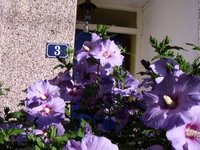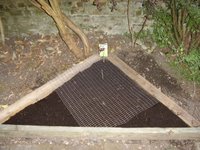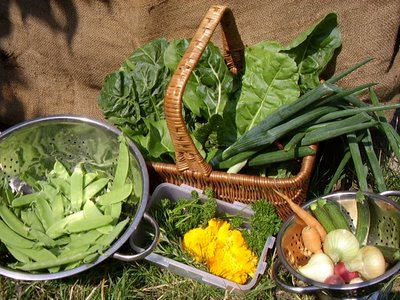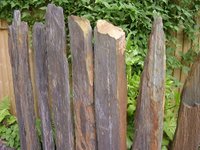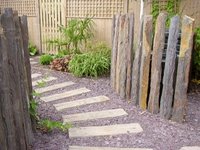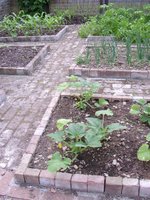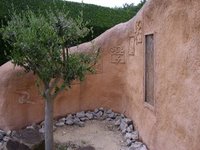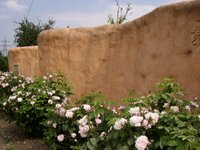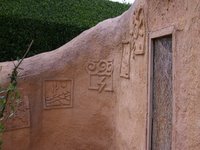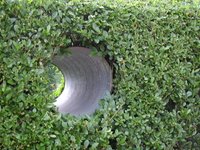Bilberry Sunday: The Feast of First Fruits
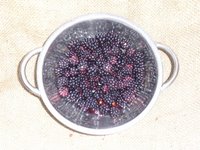 Today is the Sunday traditionally celebrated in Ireland and elsewhere as the Feast of First Fruits. It is a festival dedicated by the God Lugh to the honour of his foster mother Tailtiu who died from exhaustion after clearing a great forest so that the land could be cultivated. I may have channeled that energy today as I worked from 7 to 7 pretty much non stop with doing dishes, feeding cats, cutting down small tree in front garden, photographing fabulous flower tree, cleaning bathroom, doing a laundry load, showering and washing hair, boiling milk for yoghurt, buying fruit at farm shop, buying compost and two small plants, watering allotment, creating new raised bed, planting onions, picking courgettes, onions, spinach and blackcurrants, back home in front garden creating a lettuce raised bed, weeding front garden, planting two small plants, potting up and feeding blueberry, watering and feeding courgettes and tomatoes, eating veggie soup.
Today is the Sunday traditionally celebrated in Ireland and elsewhere as the Feast of First Fruits. It is a festival dedicated by the God Lugh to the honour of his foster mother Tailtiu who died from exhaustion after clearing a great forest so that the land could be cultivated. I may have channeled that energy today as I worked from 7 to 7 pretty much non stop with doing dishes, feeding cats, cutting down small tree in front garden, photographing fabulous flower tree, cleaning bathroom, doing a laundry load, showering and washing hair, boiling milk for yoghurt, buying fruit at farm shop, buying compost and two small plants, watering allotment, creating new raised bed, planting onions, picking courgettes, onions, spinach and blackcurrants, back home in front garden creating a lettuce raised bed, weeding front garden, planting two small plants, potting up and feeding blueberry, watering and feeding courgettes and tomatoes, eating veggie soup.Regarding the flower tree, a passing walker said they thought it was a Hibiscus, but had never seen a blue one before. This colour might be because the soil is very acidic due to conifers being there for years before I cut them back, (the acid/alkaline Ph determines whether hydrangeas are blue or pink). Also, the 84 year old lady next door said she did not remembering it flowering before though. I cut it back very much some time ago, maybe that made it flower? The BBC says that "Hard spring pruning isn't difficult and promotes a mass of stunning, large flowers."
